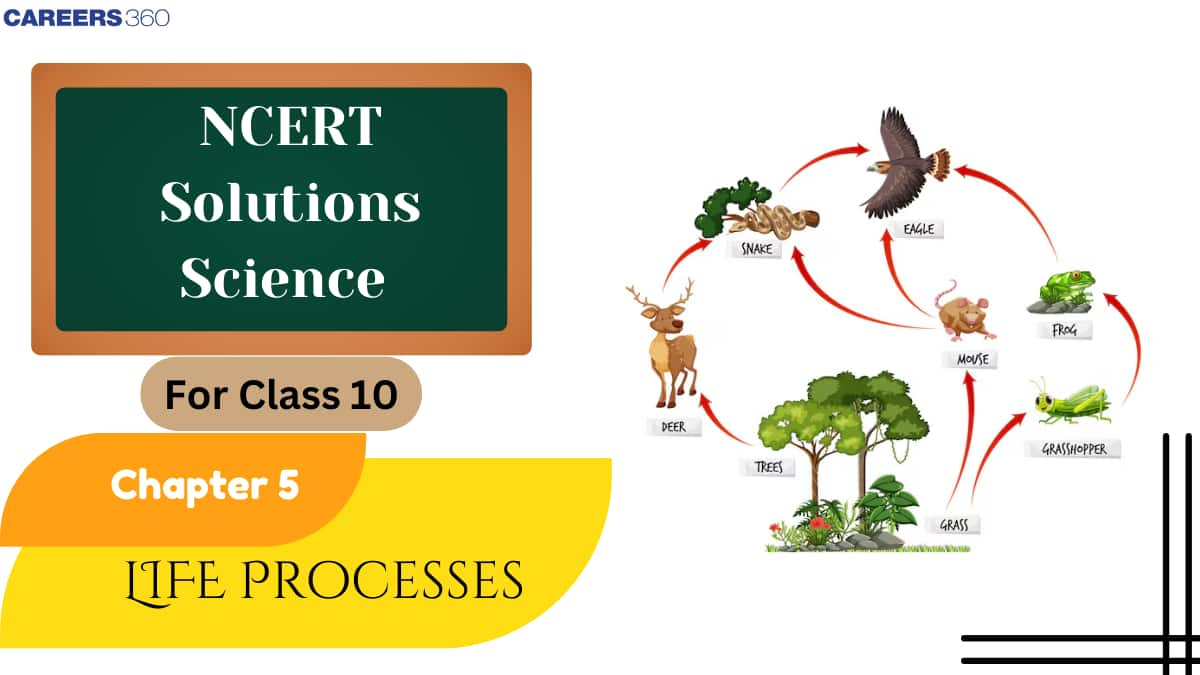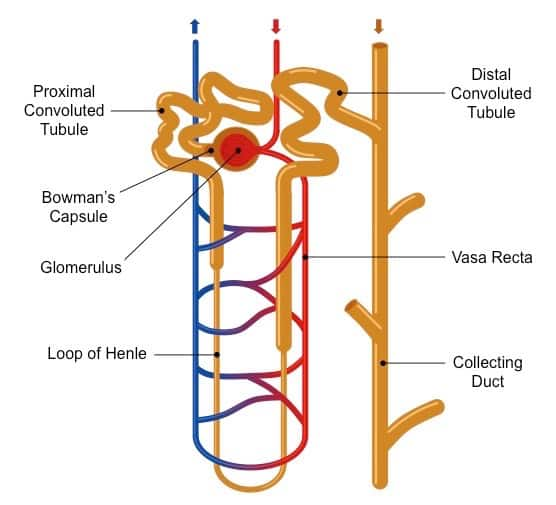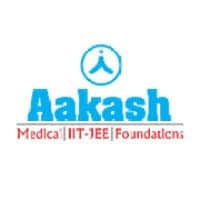Aakash Repeater Courses
Take Aakash iACST and get instant scholarship on coaching programs.
NCERT Solutions for Class 10 Science Chapter 5 Life Processes helps students to understand how living organisms work and how they are different from non-living things by learning about different body systems. The answers are given step by step for all the questions from the book, which is useful for board exams and also for competitive exams. The NCERT Solutions of this chapter cover all main topics like types of nutrition, digestion, breathing, circulation, absorption and waste removal, which are important for scoring good marks.

NCERT Solutions for Class 10 Science are explained in simple language so students can understand easily. For quick revision, the questions inside the chapter and exercise questions are answered clearly, which helps to understand the chapter without any problem. These solutions are also available in PDF, so students can read them anytime from anywhere. As it follows the latest CBSE syllabus, it becomes a good option for exam preparation. That’s why the NCERT Solutions for Class 10 Science Chapter 5 Life Processes is a good study guide for students.
Also Read:
Given below is the PDF for easy access to all the in-text and exercise questions and answers.
The exercise questions are one of the most important parts of understanding the topics. So, basically, in this section, we will see the NCERT Questions with detailed answers.
Topic 5.1 - What are life processes? Page Number 81
Q.1. Why is diffusion insufficient to meet the oxygen requirements of multicellular organisms like humans?
Answer:
Multicellular Organisms have complex organ systems, each assigned to a specific task. These systems comprise tissues which are made up of millions of cells that require a continuous supply of oxygen to meet the functional requirements. Since all these cells are not in direct contact with the environment around the organism, diffusion is insufficient to meet the oxygen requirements of multicellular organisms.
Q.2. What criteria do we use to decide whether something is alive?
Answer:
The presence of a cellular structure and processes like respiration, excretion, reproduction and growth are criteria we use to decide whether something is alive or not. In some cases, movement can also be the criteria for the same.
Q.3. What are the outside raw materials used by an organism?
Answer:
The outside raw materials used by an organism are:
1. Carbon-based compounds e.g. carbohydrates, fats etc. which provide energy for cellular processes.
2. Water is the medium for all intracellular reactions and the medium in which all of the transportation of materials takes place.
3. Oxygen which is used for aerobic respiration.
4. Some other minerals are also taken from outside as raw materials like iron, sodium, phosphorus etc.
Q.4. What processes would you consider essential for maintaining life?
Answer:
Processes that are essential for maintaining life are respiration, nutrition, transportation, excretion and control and coordination.
Topic 5.2 Nutrition: Page Number 87
Q.1. What are the differences between autotrophic nutrition and heterotrophic nutrition?
Answer:
The differences between autotrophic nutrition and heterotrophic nutrition are given below:
| Autotrophic Nutrition | Heterotrophic Nutrition |
| (i) Food or source of energy is synthesized by the organism itself by using the energy from sunlight, using simple molecules like H2O and CO2. | (i) The organism is dependent on other organisms for food or a source of energy as Heterotrophic organisms cannot prepare their food. |
| (ii) A green pigment called chlorophyll is necessary as it entraps the energy from sunlight. | (ii) Chlorophyll pigment is not required in this mode of nutrition. |
| (iii) All green plants and bacteria have this mode of nutrition. | (iii) All animals and some fungi have this mode of nutrition. |
Q.2. Where do plants get each of the raw materials required for photosynthesis?
Answer:
Plants require several raw materials and energy for photosynthesis.
(i) Plants take CO2 from the atmosphere using stomata.
(ii) Plants absorb H2O from the soil using their roots.
(iii) The energy required for photosynthesis is obtained from sunlight.
(iv) Chlorophyll is present in the chloroplast, which is found in the green parts of the plants but especially in the leaves.
Q.3. What is the role of the acid in our stomach?
Answer:
The Hydrochloric acid present in our stomach has 3 main roles.
(i) It dissolves bits of food that have been chewed.
(ii) Provides an acidic medium which is essential for the activation of the enzyme pepsin which is essential for digestion.
(iii) The acid kills bacteria present in the stomach.
Q.4. What is the function of digestive enzymes?
Answer:
The food we eat consists of very complex molecules that cannot be used directly by the body to take up energy. Therefore, these molecules have to be broken down into simple molecules.
The process of breaking down these molecules is a very complex chemical process and requires a very long time and this is where the digestive enzymes come in. They act as bio-catalysts and speed up the chemical reactions involving the breakdown of these molecules so that they can be absorbed by the cells and energy can be derived from them.
Q.5. How is the small intestine designed to absorb digested food?
Answer:
The design of the small intestine is such that it provides the maximum area for the absorption of digested food and its transportation to different parts of our body through blood vessels.
For these purposes, the inner lining of the small intestine has finger-like projections called villi providing a large surface area for absorption and the small intestine is supplied richly with blood vessels for the efficient transportation of the absorbed food.
Topic 5.3 Respiration: Page Number 91
Answer:
Terrestrial organisms breathe in oxygen for respiration directly from the environment as opposed to the aquatic organisms which have to use oxygen dissolved in water.
The concentration of dissolved oxygen in water is much lesser than that present in the air and therefore aquatic organisms have to have a much faster breathing rate than terrestrial organisms for the sufficient supply of oxygen.
In the course of evolution, aquatic organisms have also developed special body parts for the efficient absorption of oxygen dissolved in water.
Q.2. What are the different ways in which glucose is oxidised to provide energy in various organisms?
Answer:
The glucose is broken down into a 3-carbon molecule called Pyruvate in the cytoplasm of the cell in a process called glycolysis.
The process can further proceed using three different pathways depending on the amount of oxygen present.
Q.3. How are oxygen and carbon dioxide transported in human beings?
Answer:
The process through which oxygen and carbon dioxide are transported by human beings are:
(i) The transportation of oxygen from the lungs to other body parts takes place through our blood vessels. Oxygen has low solubility and therefore cannot be transported directly in plasma. The red blood cells contain a pigment called Haemoglobin with which the Oxygen molecules stick once they are absorbed through our lungs. These red blood cells carry the oxygen to the oxygen-deficient parts and then release it to be used for respiration.
(ii) Carbon dioxide is the by-product of respiration and has to be eliminated from our bodies. Due to its high solubility in water, it is directly transported from various body parts to the lungs through the plasma of our blood only and is released into the environment by exhaling.
Q.4. How are the lungs designed in human beings to maximise the area for the exchange of gases?
Answer:
The air passages in our lungs are divided into several smaller passages called bronchi.
These bronchi further divide into even smaller passages called bronchioles, which terminate into very small balloon-like structures called Alveoli. Each lung consists of a million alveoli, as they are very small in size.
These alveoli have a very soft lining, optimum for absorption of Oxygen through vessels, and their large number provides a very large surface area for the absorption of oxygen.
Topic 5.4 Transportation: Page Number 96
Answer:
The transport/circulatory system in human beings consists of the following three parts:
(i) Blood: The blood is the medium for transportation of all kinds of materials like oxygen, carbon dioxide, digested food and waste material from one part of the body to the other.
(ii) Blood Vessels: The intricate network of blood vessels consisting of arteries, veins, and capillaries run through the entire body and the transportation of materials like oxygen, carbon dioxide, digested food and waste material from one part of the body to the other takes place through the blood vessels only.
(iii) Heart: The heart pumps the blood through the blood vessels. Deoxygenated blood containing Carbon dioxide reaches the heart from different parts of the body and is pumped to the lungs through veins for releasing carbon dioxide and absorption of oxygen. Oxygen-rich blood reaches the heart from the lungs and is pumped through arteries to the tissues and organs where oxygen is required.
Q.2. Why is it necessary to separate oxygenated and deoxygenated blood in mammals and birds?
Answer:
Mammals and birds continuously require oxygen in all body parts for the process of aerobic respiration to take place so that heat is continuously generated to maintain the body temperature required.
To efficiently facilitate this process by ensuring that only oxygen-rich blood is delivered to the body tissues, it is necessary to separate oxygenated and deoxygenated blood in mammals and birds.
Q.3. What are the components of the transport system in highly organised plants?
Answer:
In highly organised plants the transport system consists of the following two components.
(i) Xylem: The xylem consists of a network of vessels and elongated cells called tracheids. The xylem tissues transport the water and other minerals absorbed from the soil by the roots to different parts of the plant.
(ii) Phloem: The Phloem tissue transports the soluble organic compounds (food) synthesized during photosynthesis from the leaves to other parts of the plant.
Q.4. How are water and minerals transported in plants?
Answer:
The roots of a plant have hair-like structures called root hair. The root hair provides a large area for the absorption of water and other dissolved minerals from the soil into the roots through diffusion.
The absorbed water and minerals travel from cell to cell by osmosis and reach the root xylem. From the root xylem water, is transported into the stem xylem. The branched xylem network from the stem leaves through the stalk of the leaf and through this network of xylem tissue water and minerals are transported in plants.
Q.5. How is food transported in plants?
Answer:
The transportation of food material in plants takes place through the phloem tissue. This transportation of food material in plants requires energy, which is obtained by using ATP. This release of energy causes a different rise in the osmotic pressure in the tissues surrounding the phloem and causes water to move in the phloem tissue through osmosis.
This further increases the osmotic pressure in the phloem and drives the circulation of water-containing food material to all parts of the plant through the phloem tissue.
Topic 5.5 Excretion: Page Number 98
Q.1. Describe the structure and functioning of nephrons
Answer:
The nephrons are the basic filtering unit of our excretion system.
Each nephron has a Bowman's capsule, which is a cup-shaped bag having a bundle of vessels called the glomerulus. Impure blood from all parts of our body enters the glomerulus through the renal artery and the impurities are filtered, The rest of the nephron is coiled and their sugars, amino acids, excess water, etc. which are important for the body are re-absorbed. The filtrate left is urine containing all the waste generated in the body e.g. urea. This urine is excreted through the urethra.

Q.2. What are the methods used by plants to get rid of excretory products?
Answer:
The following methods are used by plants to get rid of excretory products.
(i) Gaseous wastes are released in the atmosphere through the stomata in leaves and lenticels in stems.
(ii) Solid and liquid wastes are excreted by leaves shedding, bark peeling off and through fruits.
(iii) Waste products are excreted by releasing them through gums and resins.
(iv) Some waste products are directly released into the soil by the roots
Q.3. How is the amount of urine produced regulated?
Answer:
The amount of urine produced depends on the following:
(i) Amount of water ingested. If a large amount of water is ingested regularly large amounts of dilute urine will be produced. In case sufficient water is not ingested urine produced will be less in amount but will have a high concentration of nitrogenous wastes and this is harmful to the excretory system and the body.
(ii) The amount of waste produced in the body decides how much urine is to be excreted.
(iii) The release of some hormones also regulates the amount of urine produced.
Solving the Exercise Problem is a good habit, as it makes you more confident and also decreases stress. So, here we will cover All NCERT questions with their proper solution.
All the questions with solutions for the chapter and exercise are listed below for a better experience.
Q.1. The kidneys in human beings are a part of the system for
(a) nutrition. (c) excretion.
(b) respiration. (d) transportation.
Answer:
Kidneys help in removing the waste stuff from our body. They clean the blood and make urine which throws out extra water and harmful substances. This whole process is called excretion. So kidneys are not linked with food, breathing or transport. Their job is to throw out waste, that’s why they come under the excretion system.
Hence, the correct answer is Option (c) excretion.
Q.2 The xylem in plants are responsible for
(a) the transport of water. (c) transport of amino acids.
(b) transport of food. (d) transport of oxygen.
Answer:
Xylem is that part in plants which takes water from the roots and sends it to other parts like stem and leaves. It doesn’t carry food or anything else, only water and minerals. That’s the main work of xylem. Other things like food are carried by phloem.
Hence, the correct answer is Option (a) the transport of water.
Q.3. The autotrophic mode of nutrition requires
(a) carbon dioxide and water. (c) sunlight.
(b) chlorophyll. (d) all of the above.
Answer:
In autotrophic nutrition, the plant makes its food on its own. It needs carbon dioxide, water, sunlight and also chlorophyll to do that. Chlorophyll helps to catch sunlight. This whole process is called photosynthesis. If any one of these is missing, plant can’t make food. So it needs all of them together.
Hence, the correct answer is Option (d) all of the above.
Q.4. The breakdown of pyruvate to give carbon dioxide, water and energy takes place in
(a) cytoplasm. (c) chloroplast.
(b) mitochondria. (d) nucleus.
Answer:
Pyruvate is a product that comes after food is broken in cells. This pyruvate goes to mitochondria where it gets broken into carbon dioxide, water and gives energy. Mitochondria is also called the powerhouse of the cell because it gives energy. This doesn’t happen in nucleus or cytoplasm.
Hence, the correct answer is Option (b) mitochondria.
Q.5. How are fats digested in our bodies? Where does this process take place?
Answer:
Digestion of fat takes place in the small intestine. Fat reaches the small intestine in the form of large globules.
The liver releases bile juice which emulsifies the fat i.e., it breaks down the large globules into smaller globules thus increasing the area on which pancreatic juice called lipase acts and breaks down the globules into molecules.
The small intestine then releases juices which convert these fat molecules into fatty acids and glycerol which can be used by the body.
Q.6. What is the role of saliva in the digestion of food?
Answer:
Saliva contains an enzyme called salivary amylase that starts the process of digestion in the mouth itself by breaking down starch into sugar molecules like maltose.
Saliva helps in keeping the mouth clean, moistened and lubricated thus aiding in chewing food so that large pieces are broken down into small bits.
Q.7. What are the necessary conditions for autotrophic nutrition and what are its byproducts?
Answer:
The necessary conditions for autotrophic nutrition are the following:
(i) Supply of carbon dioxide, which is the raw material for this mode of nutrition.
(ii) Presence of sunligh,t which is the source of energy.
(iii) Presence of chlorophyll in the leave,s which entraps the energy from sunlight.
(iv) Supply of water.
The byproduct of autotrophic nutrition is Oxygen.
Answer:
Differences between aerobic and anaerobic respiration are mentioned below:
| Aerobic Respiration | Anaerobic Respiration |
| (i) It takes place in the presence of Oxygen. | (i) It takes place in the absence of Oxygen. |
| (ii) It involves the exchange of gases between organisms and their surroundings. | (ii) It does not involve the exchange of gases between organisms and their surroundings |
| (iii) The end products are always Carbon dioxide and water. | (iii) The end products vary. |
| (iv) Complete breakdown of glucose molecules takes place. | (iv) Partial breakdown of glucose molecules takes place. |
| (v) More energy is produced per molecule of glucose broken down. | (v) Less energy is produced per molecule of glucose broken down. |
| (vi) Takes place in the cytoplasm and mitochondria. | (vi) Takes place only in the cytoplasm. |
Anaerobic respiration takes place in some worms, water-logged plants, yeast and some bacteria like Clostridium.
Q.9. How are the alveoli designed to maximise the exchange of gases?
Answer: Alveoli are thin-walled and are richly supplied with blood vessels to maximise the exchange of gases.
The alveoli have a balloon-like structure, thus providing a large surface area available for the exchange of gases.
Q.10. What would be the consequences of a deficiency of haemoglobin in our bodies?
Answer:
The job of haemoglobin is to carry oxygen to the lungs and other parts of the body. So if there’s a lack of haemoglobin, the oxygen level in the body goes down. This means the body can’t make enough energy, and the person feels tired most of the time. It also affects immunity, so the person can easily get sick.
Q.11. Describe the double circulation of blood in human beings. Why is it necessary?
Answer:
Deoxygenated blood rich in carbon dioxide and deficient in oxygen reaches the heart through a network of veins enters the network through the vena cava and is brought into the right atrium. From the right atrium, the deoxygenated blood goes to the right ventricle, from where it is pumped to the lungs through the pulmonary artery where carbon dioxide is released into the environment and oxygen is absorbed in the blood. From the lungs, the oxygenated blood enters the left atrium through the pulmonary vein. From the left atrium, the blood enters the left ventricle from where it is pumped to all parts of the body to facilitate the supply of oxygen.
This double circulation in human beings helps maintain high oxygen levels in blood which facilitates sufficient aerobic respiration for the generation of sufficient heat to maintain the body temperature.
Q.12. What are the differences between the transport of materials in the xylem and phloem?
Answer:
| Xylem | Phloem |
| (i) In Xylem water and minerals absorbed from the soil by the roots are transported to other parts of the plant. | (i) In Phloem food synthesized through photosynthesis is transported from the leaves to other parts of the plant. |
| (ii) In Xylem transport of material takes place through vessels and tracheids which are dead tissue. | (ii) In Phloem transport of material takes place through sieve tubes and companion cells which are living cells. |
| (iii) In the xylem upward movement of water is produced by transpirational pull occurring due to the evaporation of water from the leaves | (iii) In Phloem material is transported due to the difference in osmotic pressure created using energy from ATP. |
Answer:
| Alveoli | Nephron |
| (i) The alveoli are the functional unit of the lungs. | (ii) Nephron is the functional unit of the Kidneys. |
| (ii) A lung has about 300 million alveoli. | (ii) A kidney has about a million nephrons. |
| (iii) Alveoli provide a very large surface for the exchange of gaseous materials to take place. | (iii) The Surface area of Nephrons is not very large. |
| (iv) The exchange of carbon dioxide and oxygen takes place through alveoli. | (iv) The absorption of water, amino acids, sugar molecules etc. takes place in the Nephron. |
The student should start by understanding the core concepts like nutrition, respiration, transportation, and excretion in both plants and animals.
Take Aakash iACST and get instant scholarship on coaching programs.
Download Ebook - NCERT Class 10 Science: Chapterwise Important Formulas, Diagrams, And Points
Life Processes teaches about the various life processes that occur in animals and plants.
The chapter discusses the various topics:-
Also Check NCERT Books and NCERT Syllabus here:
Below is solved practice question:
Q1. What is the difference between autotrophic and heterotrophic nutrition?
A. Autotrophic organisms depend on others for food, while heterotrophic organisms make their own food through photosynthesis.
B. Autotrophic organisms make their own food, for example, plants through photosynthesis, while heterotrophic organisms depend on others for food, for example, animals.
C. Both autotrophic and heterotrophic organisms make their own food.
D. Heterotrophic organisms make their own food, while autotrophic organisms depend on others for food.
Correct Answer: B
Explanation:
Autotrophic nutrition is when the organism makes its own food. It uses simple things like carbon dioxide, water and sunlight. This process is called photosynthesis. Green plants, algae and some bacteria do this. They have chlorophyll which helps them to trap sunlight and make food. These are called autotrophs. They are the starting of the food chain.
Heterotrophic nutrition is opposite. The organism can’t make its own food so it depends on others. Humans, animals, fungi and many bacteria come under this. They eat plants or animals to get energy.
So the main difference is autotrophs make their food by themselves and heterotrophs take food from others.
Hence, the correct answer is Option B. Autotrophic organisms make their food, for example, plants through photosynthesis, while heterotrophic organisms depend on others for food, for example, animals.
The NCERT Solutions for all Class 10 science chapters are given below-
The essential life processes include nutrition, respiration, transportation, excretion, and control and coordination. These processes help organisms obtain energy, remove waste, transport materials, and respond to stimuli to sustain life.
Herbivores consume plants that contain cellulose, which is difficult to digest and takes longer to break down. Therefore, herbivores have longer small intestines to allow more time for the digestion of cellulose, unlike carnivores who eat meat that is easier to digest.
Autotrophic nutrition is where organisms make their own food from simple substances like sunlight (photosynthesis), while heterotrophic nutrition involves organisms obtaining food by consuming other organisms or organic matter.
Diffusion is a slow process and cannot supply oxygen quickly enough to all cells in large multicellular organisms because not all cells are in direct contact with the environment. Hence, humans have specialized respiratory and circulatory systems to transport oxygen efficiently.
The four life processes covered in Class 10 Science Chapter 5 (Life Processes) are:
Nutrition in Plants: Plants exhibit autotrophic nutrition, wherein they synthesize their own food by the process of photosynthesis using sunlight, carbon dioxide, and water. It takes place in chloroplasts and yields glucose and oxygen.
Nutrition in Animals: Animals exhibit heterotrophic nutrition, wherein they take in other organisms as food. The process involves ingestion, digestion, absorption, assimilation, and egestion to acquire and utilize the nutrients.
The difference between aerobic and anaerobic respiration is mentioned below:
| Feature | Aerobic Respiration | Anaerobic Respiration |
|---|---|---|
| Oxygen Requirement | Requires oxygen | Occurs without oxygen |
| Location in Cells | Takes place in mitochondria | Occurs in the cytoplasm |
| Energy Production | Produces high energy (38 ATP) | Produces less energy (2 ATP) |
| End Products | Carbon dioxide and water | Lactic acid (in animals) or alcohol and CO₂ (in yeast) |
| Example | Humans during normal breathing | Muscle cells during heavy exercise, yeast fermentation |
Plants perform photosynthesis using chlorophyll in their leaves to capture sunlight and convert carbon dioxide and water into glucose and oxygen. This process occurs in the chloroplasts and follows the equation:
6CO₂ + 6H₂O + sunlight → C₆H₁₂O₆ + 6O₂.
The glucose produced provides energy for the plant, while oxygen is released into the atmosphere
Stomata are small pores on the leaf surface that are important in photosynthesis for gas exchange. They take in carbon dioxide (CO₂) from the atmosphere, which is utilized to synthesize glucose, and emit oxygen (O₂) as a waste product. Stomata also assist in transpiration, which regulates the water balance in plants.
Hello
Since you are a domicile of Karnataka and have studied under the Karnataka State Board for 11th and 12th , you are eligible for Karnataka State Quota for admission to various colleges in the state.
1. KCET (Karnataka Common Entrance Test): You must appear for the KCET exam, which is required for admission to undergraduate professional courses like engineering, medical, and other streams. Your exam score and rank will determine your eligibility for counseling.
2. Minority Income under 5 Lakh : If you are from a minority community and your family's income is below 5 lakh, you may be eligible for fee concessions or other benefits depending on the specific institution. Some colleges offer reservations or other advantages for students in this category.
3. Counseling and Seat Allocation:
After the KCET exam, you will need to participate in online counseling.
You need to select your preferred colleges and courses.
Seat allocation will be based on your rank , the availability of seats in your chosen colleges and your preferences.
4. Required Documents :
Domicile Certificate (proof that you are a resident of Karnataka).
Income Certificate (for minority category benefits).
Marksheets (11th and 12th from the Karnataka State Board).
KCET Admit Card and Scorecard.
This process will allow you to secure a seat based on your KCET performance and your category .
check link for more details
https://medicine.careers360.com/neet-college-predictor
Hope this helps you .
Hello Aspirant, Hope your doing great, your question was incomplete and regarding what exam your asking.
Yes, scoring above 80% in ICSE Class 10 exams typically meets the requirements to get into the Commerce stream in Class 11th under the CBSE board . Admission criteria can vary between schools, so it is advisable to check the specific requirements of the intended CBSE school. Generally, a good academic record with a score above 80% in ICSE 10th result is considered strong for such transitions.
hello Zaid,
Yes, you can apply for 12th grade as a private candidate .You will need to follow the registration process and fulfill the eligibility criteria set by CBSE for private candidates.If you haven't given the 11th grade exam ,you would be able to appear for the 12th exam directly without having passed 11th grade. you will need to give certain tests in the school you are getting addmission to prove your eligibilty.
best of luck!
According to cbse norms candidates who have completed class 10th, class 11th, have a gap year or have failed class 12th can appear for admission in 12th class.for admission in cbse board you need to clear your 11th class first and you must have studied from CBSE board or any other recognized and equivalent board/school.
You are not eligible for cbse board but you can still do 12th from nios which allow candidates to take admission in 12th class as a private student without completing 11th.

Take Aakash iACST and get instant scholarship on coaching programs.

This ebook serves as a valuable study guide for NEET 2025 exam.

This e-book offers NEET PYQ and serves as an indispensable NEET study material.

As per latest syllabus. Physics formulas, equations, & laws of class 11 & 12th chapters
As per latest syllabus. Chemistry formulas, equations, & laws of class 11 & 12th chapters
As per latest 2024 syllabus. Study 40% syllabus and score upto 100% marks in JEE